12 min read
Benefits Of Hiring a Real Estate CPA (+ Costs, Tips & Software)
Whenever tax season rolls around—bringing with it all those dreaded forms and reports—many landlords enlist the help of a real estate tax...
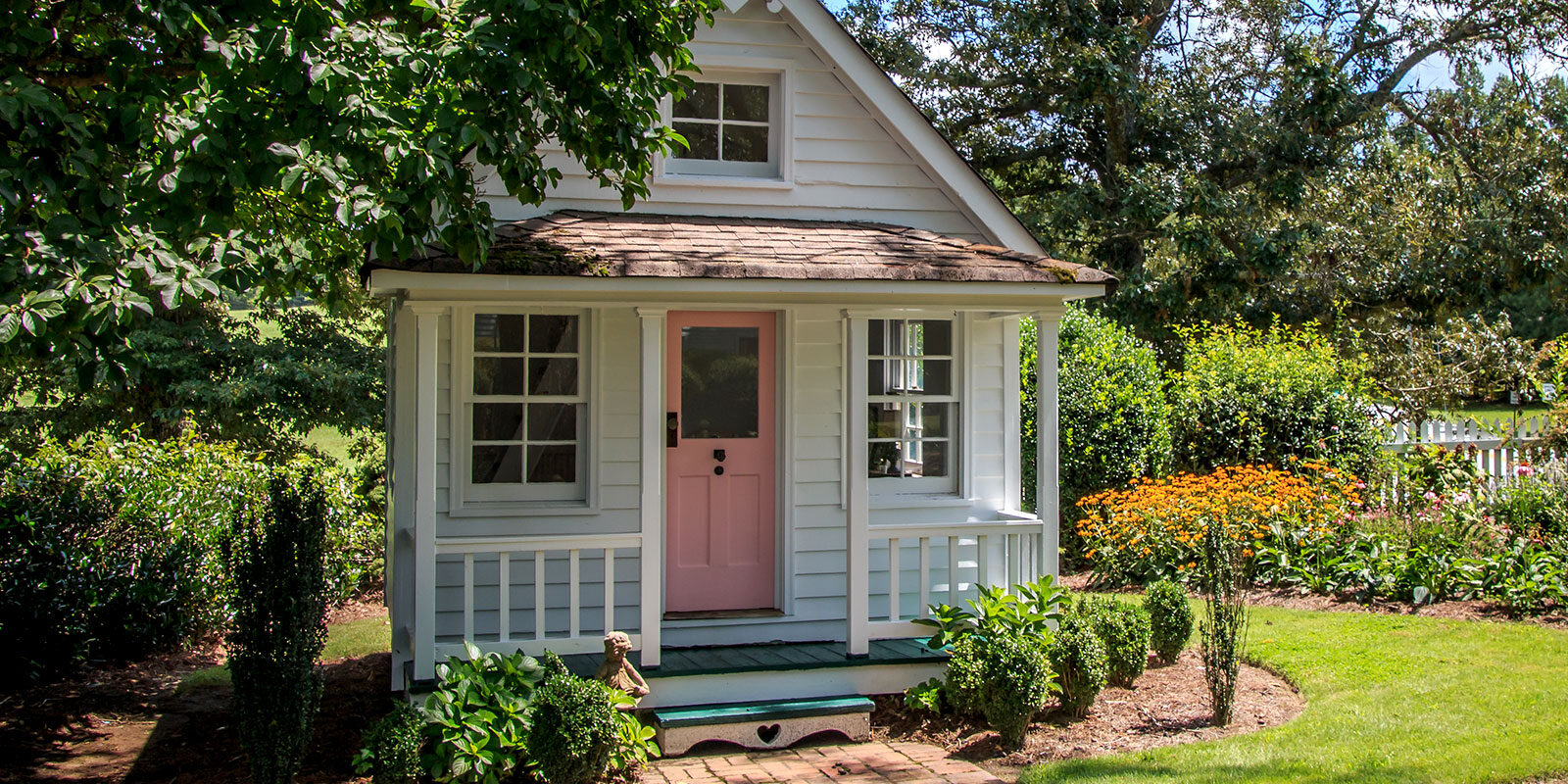
From young couples to large families, landlords come across various types of tenants.
Some families not only have kids to raise, but elderly parents to care for. As a landlord, it’s important to understand the needs of your tenants and offer a safe and comfortable living situation for everyone involved.
According to the United States Census Bureau, within the next three decades, the senior population is expected to more than double. This makes investing in senior-friendly rentals a smart long-term investment. One option that has become increasingly popular is granny pods. A granny pod allows seniors to live with family while still maintaining independence.
Keep reading to learn everything you need to know about granny pods and why managing one is the perfect long-term investment.
A granny pod is essentially a modified guest house, usually found in the backyard of a property, that allows caregivers proximity to aging parents or loved ones. Granny pods have a variety of names including “in-law cottages,” “granny shacks,” or accessory dwelling units (ADUs).
The typical size of these units is between 250 and 900 square feet. These are typically designed with wheelchair accessibility and safety features in mind so that seniors and caregivers alike can feel comfortable and confident with their living arrangements.
These ADUs have become increasingly popular as more families seek alternatives to assisted living. Between 2009 and 2019, the number of first-time listings of ADUs grew by an average of 8.6% year-over-year. Not only that, but the number of rental listings with ADUs also increased as many towns within the last decade have started to allow them.
To install one of these units on your property, you have to check the zoning laws in your area and obtain the necessary building approvals required by local agencies. Some municipalities don’t allow ADUs, but some communities have written special ordinances that make exceptions for healthcare-related dwellings.
Check with your local authority, including homeowner association agreements, and make sure all intended uses of the granny pod have been cleared before moving forward with building or purchasing one for a property.
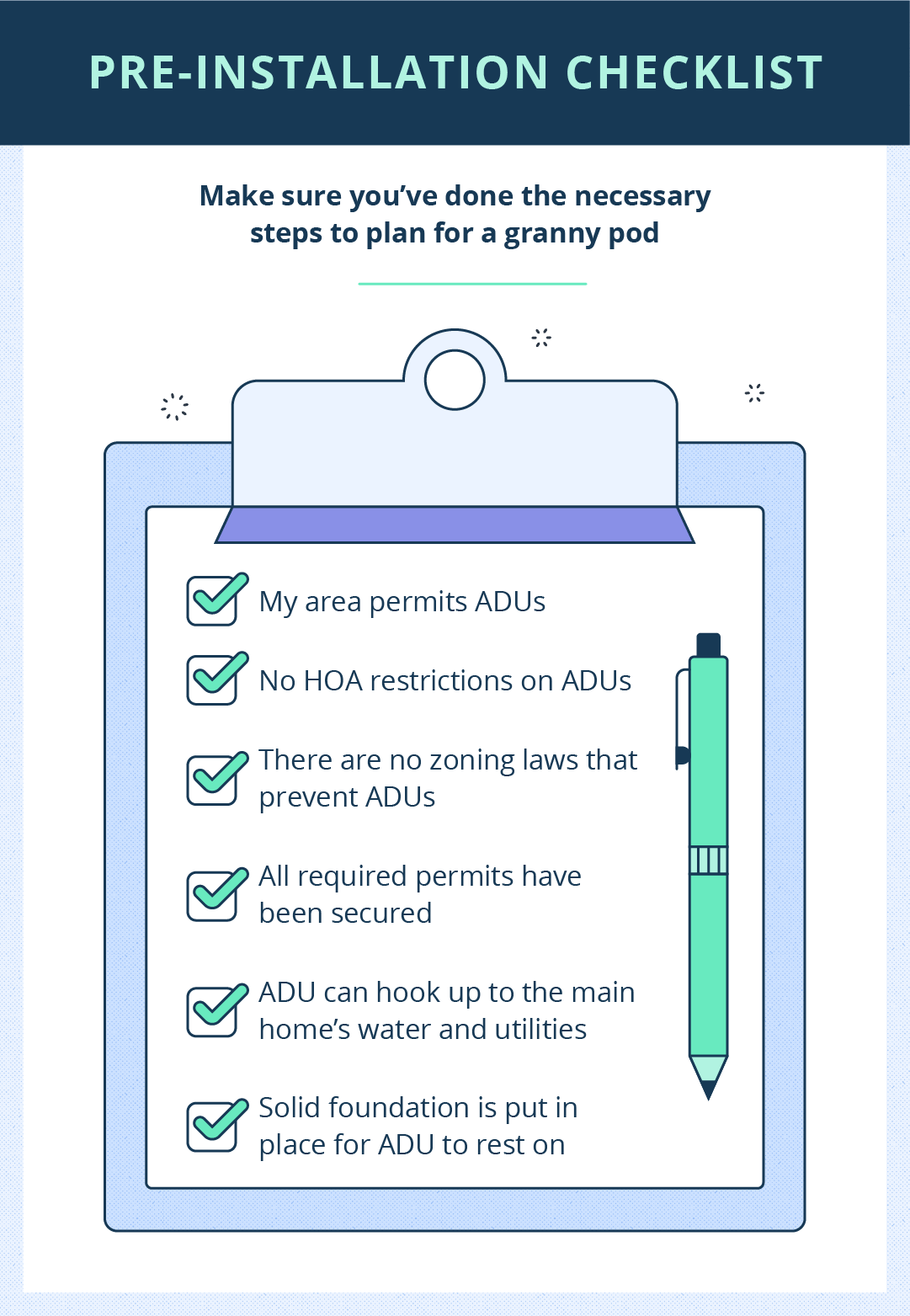
Typically, the inside of a granny pod looks like a mini-sized traditional home. However, there are considerable differences as granny pods are built specifically for the safety of seniors. This means that they will have very open floor plans, wide doorways and hallways for wheelchair accessibility, and even special flooring to avoid any tripping hazards.
Some of the high-end granny pods, such as prefabricated styles, offer advanced features equipped with safety technologies such as:
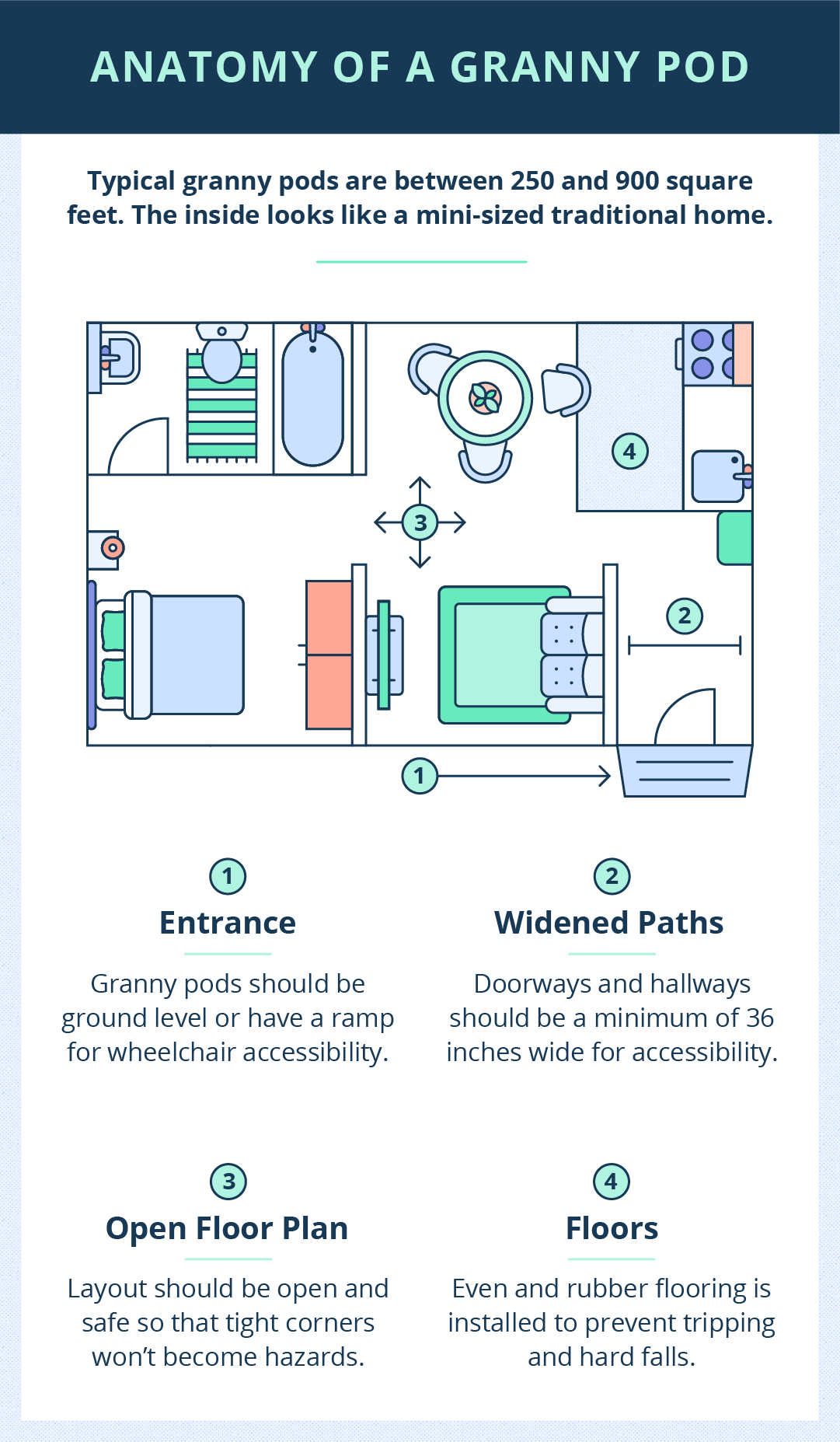
The cost of a granny pod depends on many factors, including what type of granny pod you invest in and how many bells and whistles you plan to install. For the simplest of granny pods, expect to pay around $40,000 upfront. For a high-end granny pod with all the safety features, technologies, and amenities needed for quality care and comfort, you can expect to pay up to $125,000.
Although the up-front cost to build a granny pod is expensive, charging rent for these dwellings averages around $2,000 a month. That doesn’t include the main house on the property, so if you plan to rent both residences you have the option to charge them separately or combined for a higher rate.
For tenants, there is a long list of benefits of granny pods including proximity to loved ones, continued independence, and prolonged aging in place. From a landlord’s perspective, there are more benefits of a granny pod than just happy tenants.
Depending on your local per-square-foot real estate valuation, your property value could increase with the addition of an ADU on your property. Detached ADUs like granny pods have the potential to increase a property’s value by 20–30%. Some projects double the property value compared to the building costs, which practically gives you an instant return on investment.
A granny pod doesn’t have to be strictly for grandma and grandpa. Having an ADU on your property allows you to rent out the space separately for additional rental income. Since granny pods have added safety features and wheelchair accessibility, renting out the space to seniors or tenants with disabilities could be an option.
Not every rental property has a granny pod. In 2019, only 4.1% of rental listings included ADUs. This means that you’ll be able to advertise your property to niche markets of families who are seeking rentals that offer extra room for elderly family members or loved ones.
Although an extra bedroom could solve this, a granny pod offers way more than just a place to sleep. It gives seniors continued independence since they have their own space and privacy, which is appealing to both seniors and caregivers.
Although there are plenty of benefits of granny pods for both landlords and tenants, there are a few potential downsides to them. It’s good to consider both advantages and disadvantages before you start the investment.
Even though you get your return on investment, building a granny pod takes a lot of money up-front. However, the up-front cost can vary depending on a variety of factors, like whether or not you intend to build one from the ground up or convert an existing structure.
Some areas don’t allow ADUs like granny pods, so zoning laws can prevent you from building one. That’s why it’s important to check with your local authorities and to do your research before doing anything else. So for a landlord, this takes a lot of planning and commitment.
If you plan to sell your property in the future, it’s important to check the value of the other homes in your area. Even though your property will increase in value with a granny pod, if other homes in your neighborhood are valued substantially lower, you may have trouble selling it for their appraised value. This is because it’s easier to sell the least expensive home on the block rather than the most expensive.
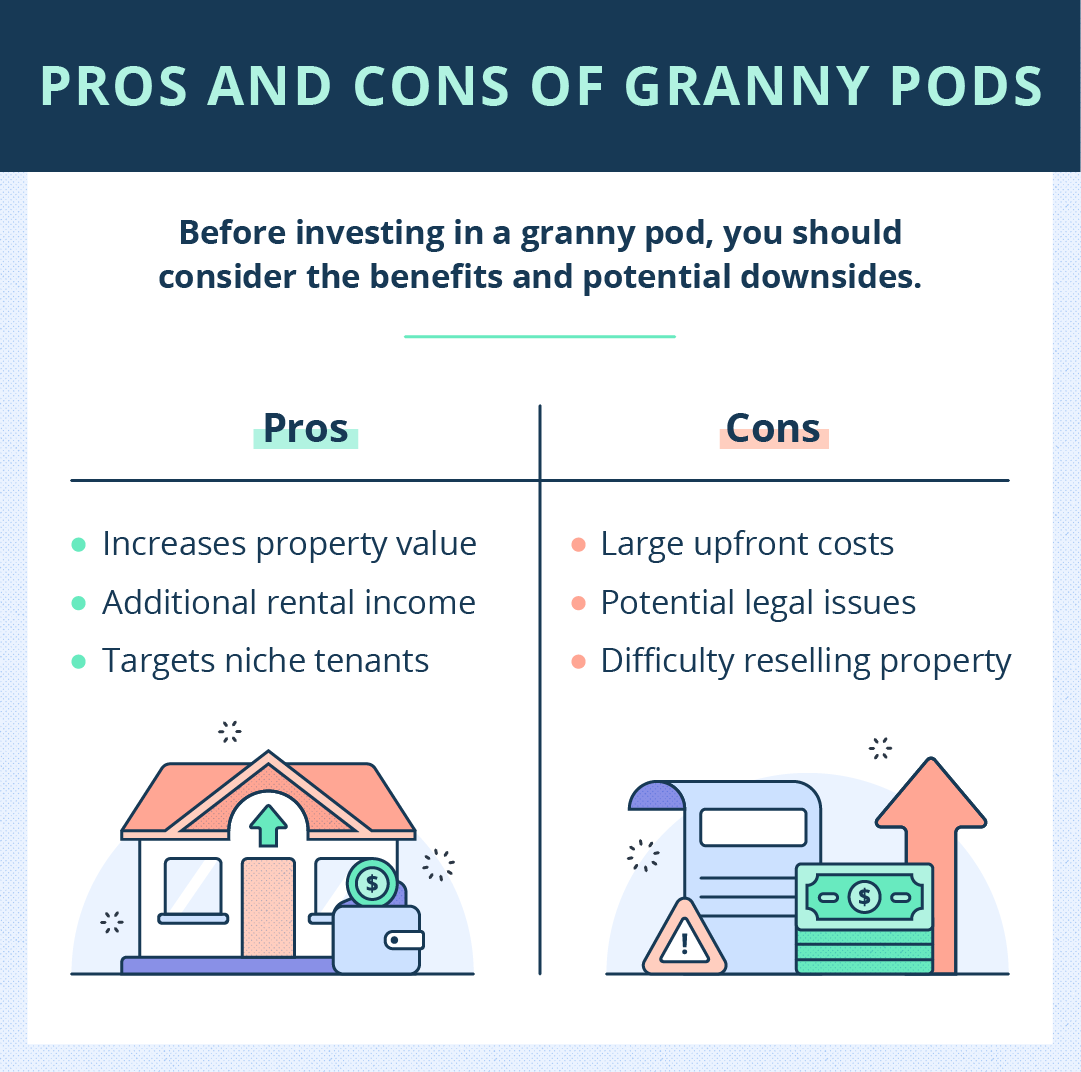
There are different ways you can install a granny pod on your property including building one from scratch, converting an existing structure, or installing a prefabricated granny pod. We’ve broken down the process and considerations for each option so you can consider which is best for you.
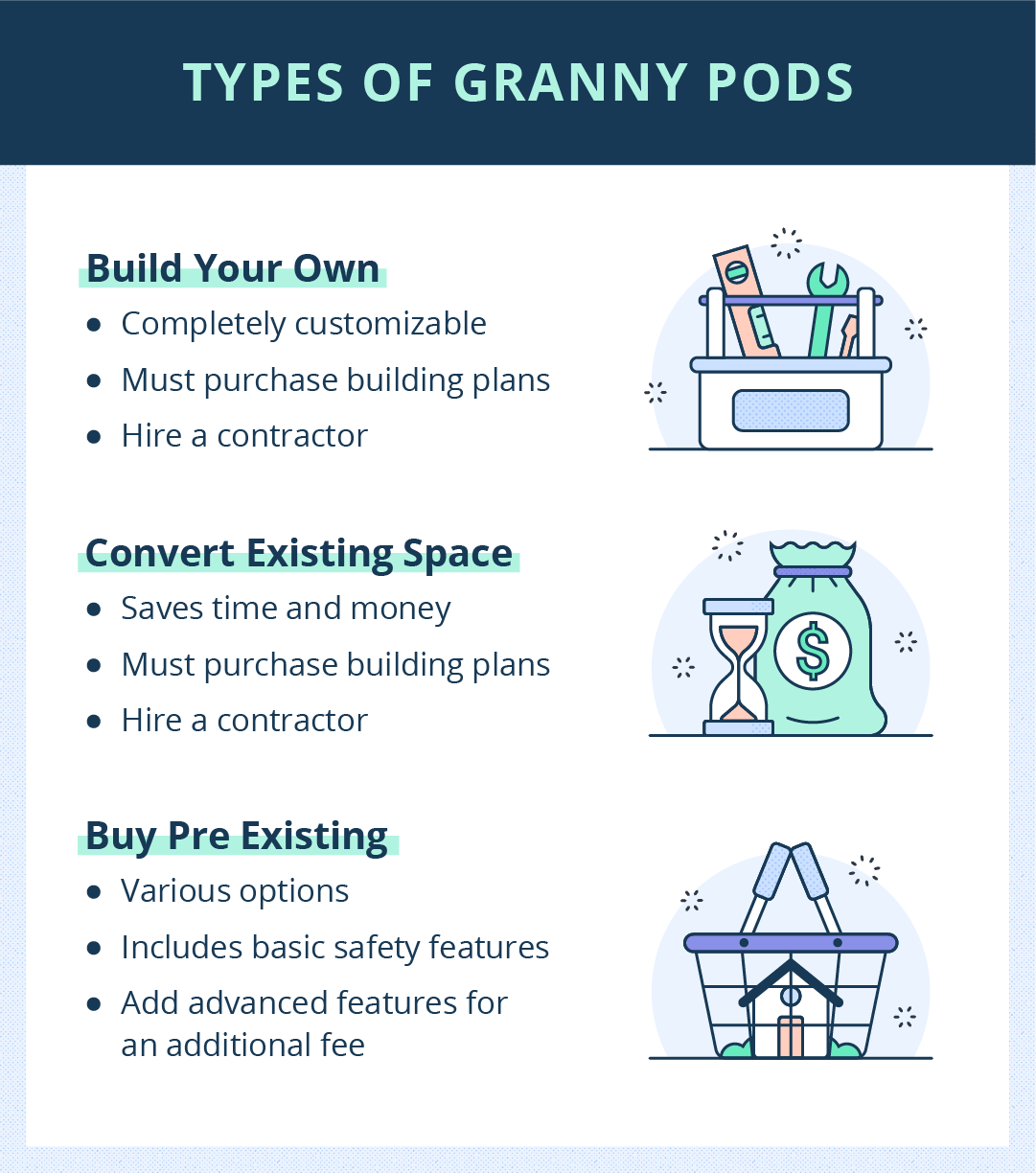
The first option is to build a granny pod from scratch. To do so, you’ll need to purchase building plans and hire a contractor, but this option gives you a lot of room to customize the granny pod to your target tenant’s needs.
Things to consider:
If you have a pre-existing outbuilding or shed, you could convert it into a granny pod. You’ll still need to purchase building plans and hire a contractor for the job, but this option can save you not only time but money as well.
Things to consider:
The simplest option is to buy a prefabricated granny pod from a company that specializes in these types of units. They can come with all the safety features and modifications needed for exceptional care and comfort while making the process of planning and installing one much easier.
Things to consider:
Since nursing homes and other assisted living facilities have become less popular within the elderly community, most people are looking for alternatives. Granny pods are an exciting option for tenants who have aging loved ones as they offer proximity to family and caregivers. As a landlord, investing in these ADUs can not only help you land these niche tenants but they can also increase your property value and give you additional rental income in the process. Don’t forget to use our tenant screening services to help you find the right family for your property.
12 min read
Whenever tax season rolls around—bringing with it all those dreaded forms and reports—many landlords enlist the help of a real estate tax...
13 min read
Investing in real estate can be a great way to diversify your investment portfolio, although many people don’t take advantage of doing...
15 min read
There are many moving pieces to consider as you make your next rental agreement. For starters, you must ensure your lease agreement complies with state...
Join the 700,000+ independent landlords who rely on TurboTenant to create welcoming rental experiences.
No tricks or trials to worry about. So what’s the harm? Try it today!
TurboTenant, Inc., © 2025
Created in Sunny Colorado